Black Garden Ant Lasius niger
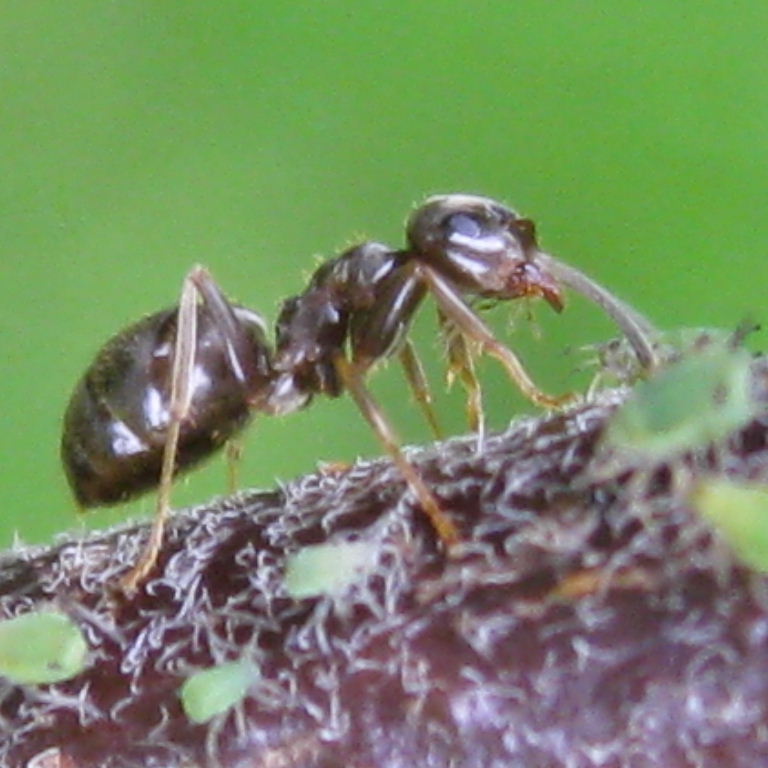
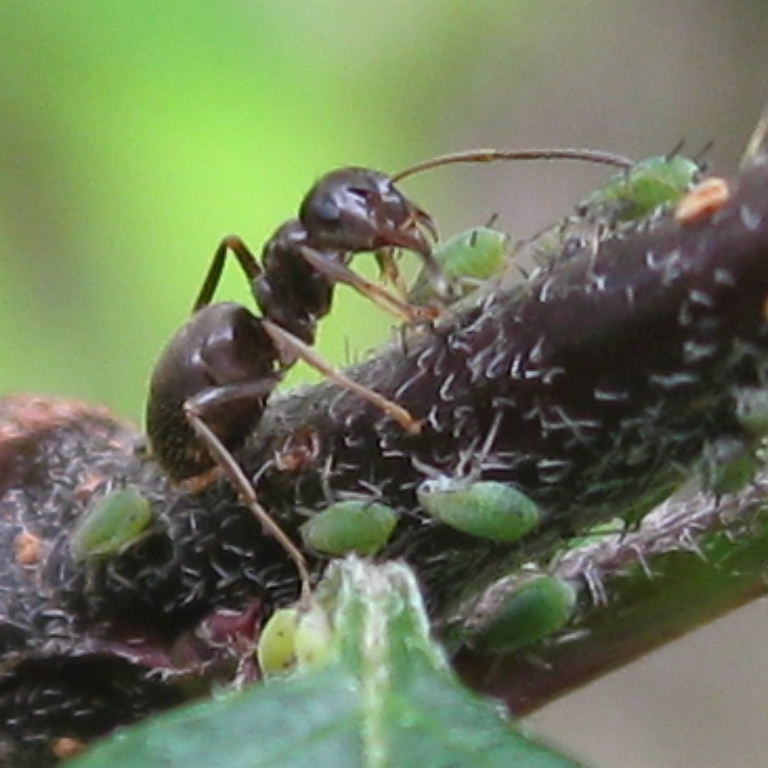
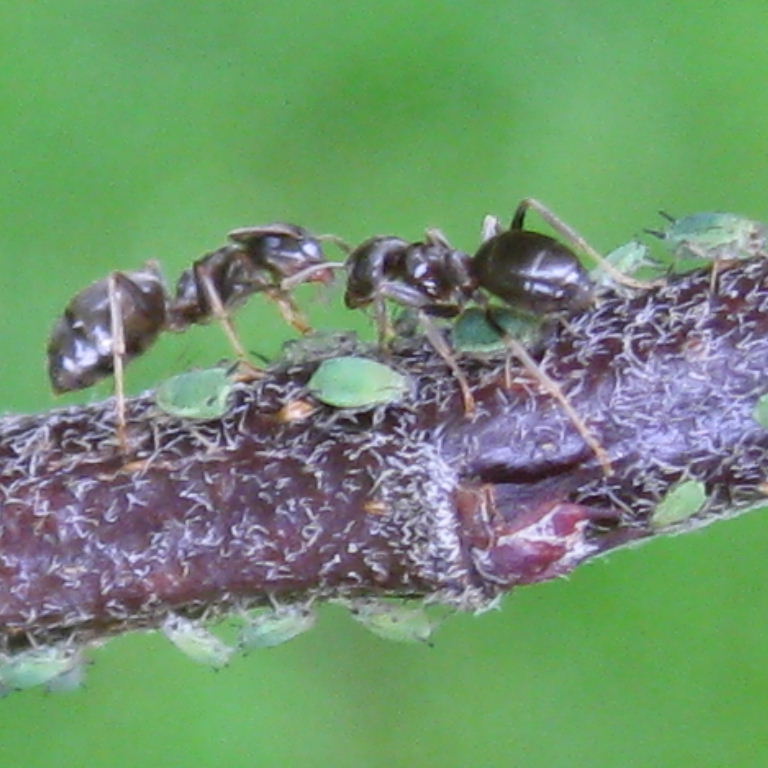
The Black Garden Ant, also called Common Black Ant, is a small, dark ant common to gardens,
under paving stones and varied other habitats through much of Eurasia, the Americas and Australasia. It is the commonest ant seen
in the UK. It is not jet black (like L. fuliginosus) but is very dark brown and mostly glossy. Legs can be lighter.
It can spray formic acid as well as biting.
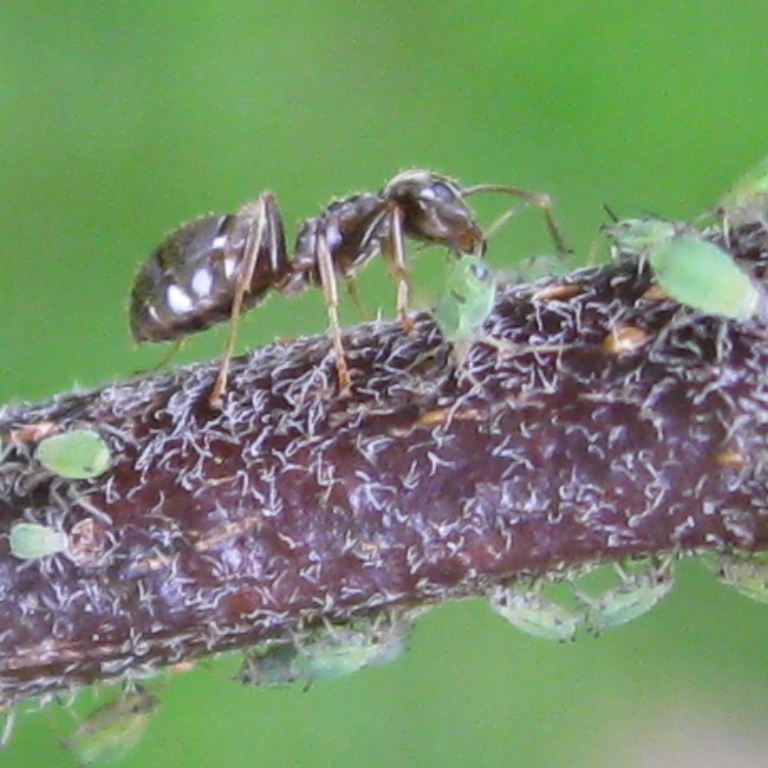
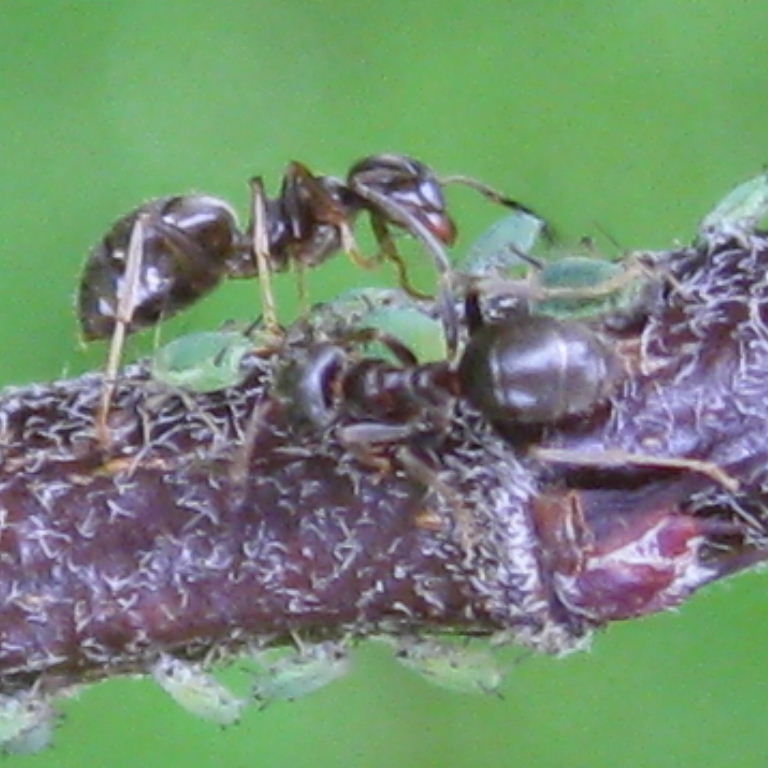
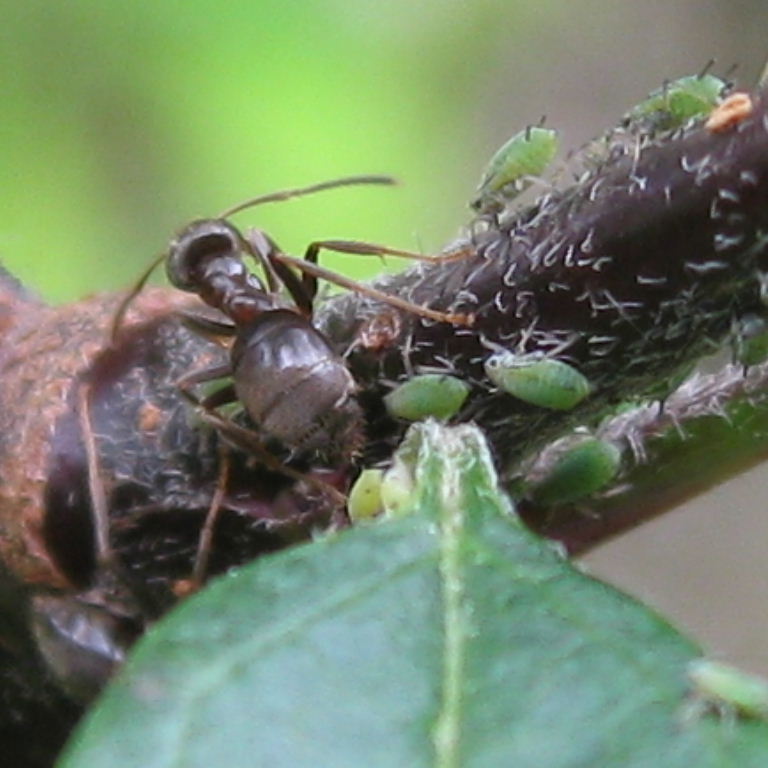
Like bees and wasps, to which ants are related, the large colonies have one or more large queens (see link below), a few males
prior to mating flights and a large number of female (non-breeding) workers who have specific tasks such as foragers, care of larvae (legless grubs),
repair of nest and soldiers. Workers are some 3.5-5mm long (males are similar and queens 8-9mm).
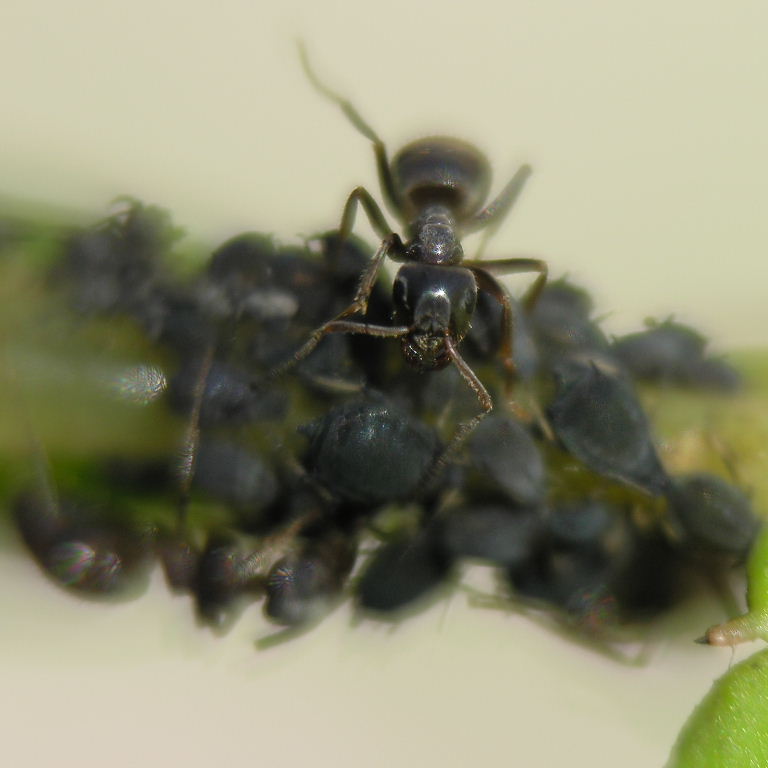
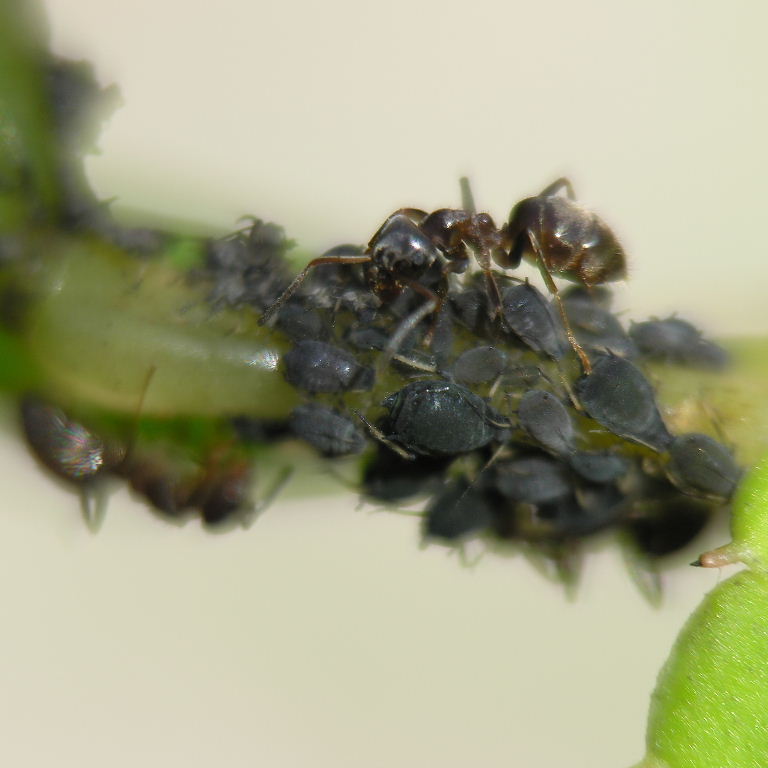
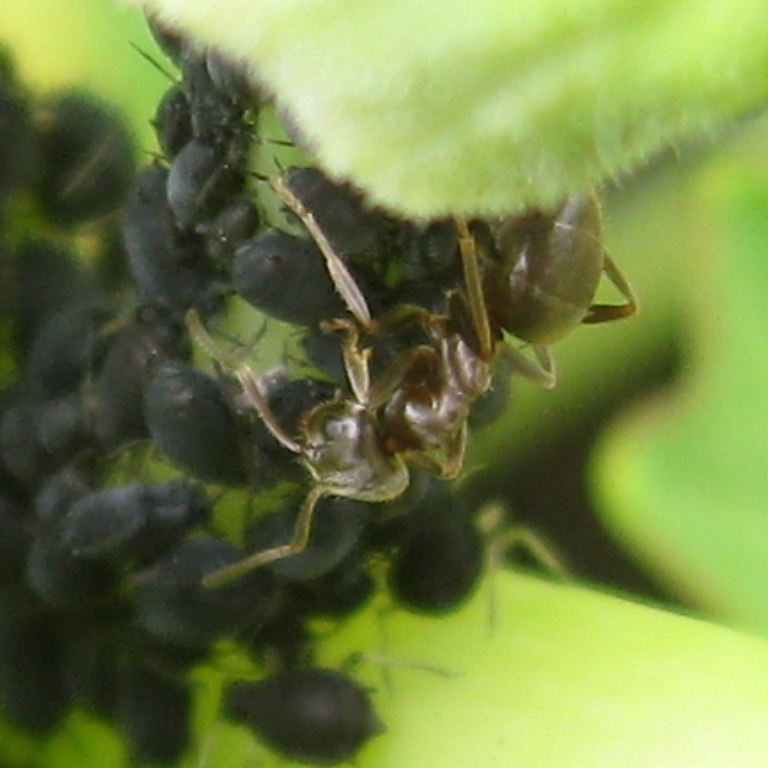
One of the key tasks of these garden ants is farming of aphids. In addition to eating insect prey, they
farm aphids like humans farm cows, protecting them, "milking" them of honeydew and eating the "meat" of the insect.
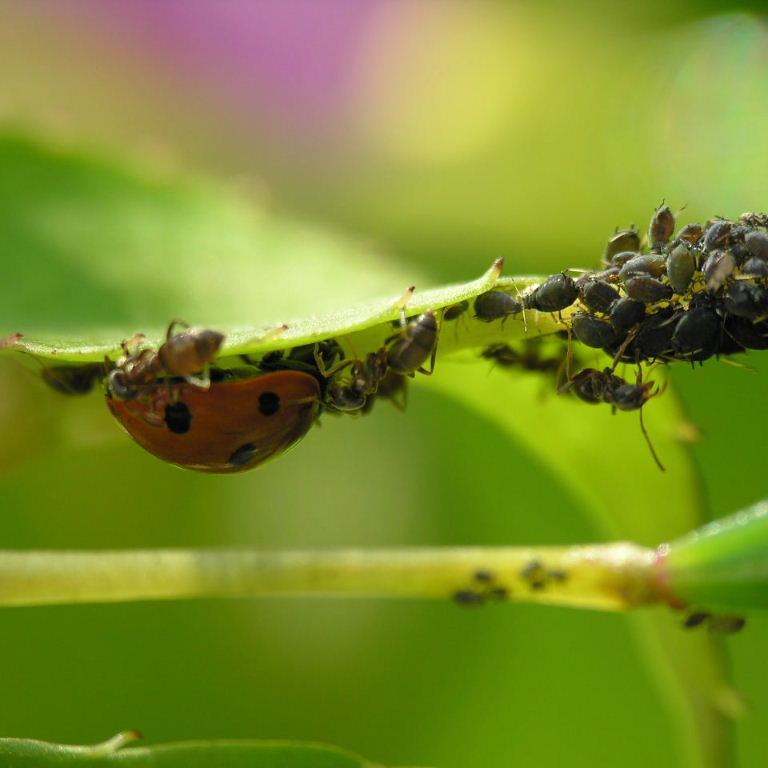
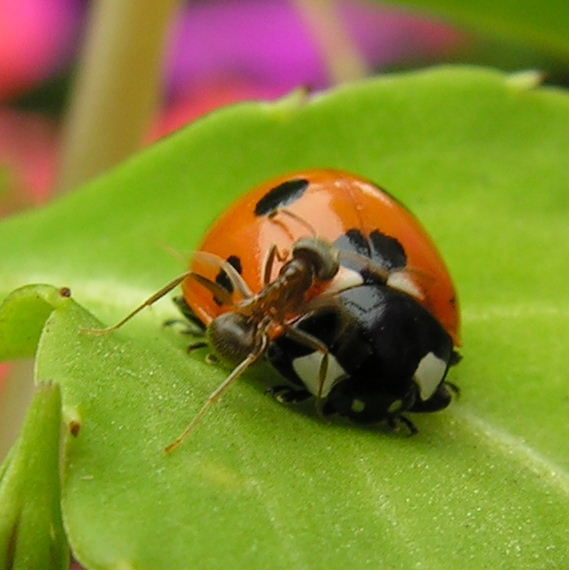
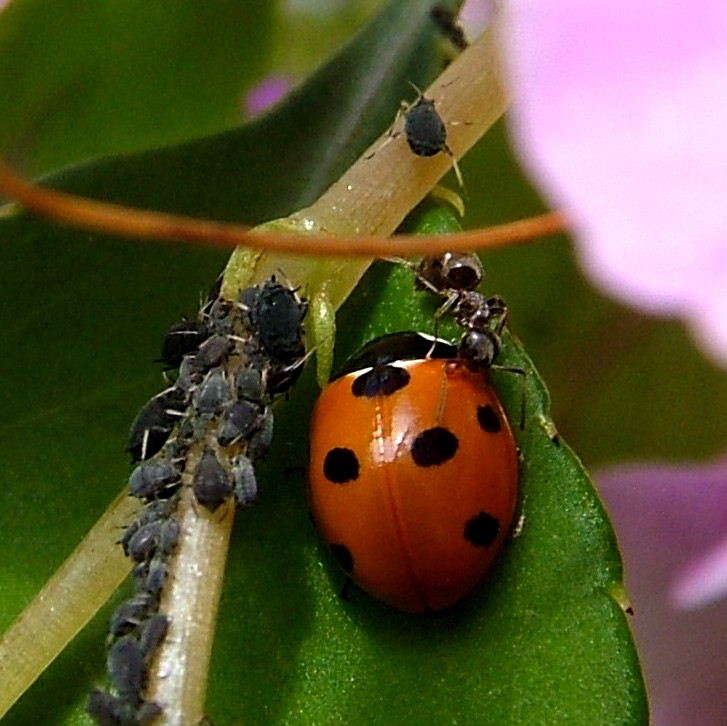
Ladybirds are one of the key predators of ants' "herds" of aphids. The ants sting the ladybird with acid under its
tanklike wing cases and score the covering with their sharp jaws.
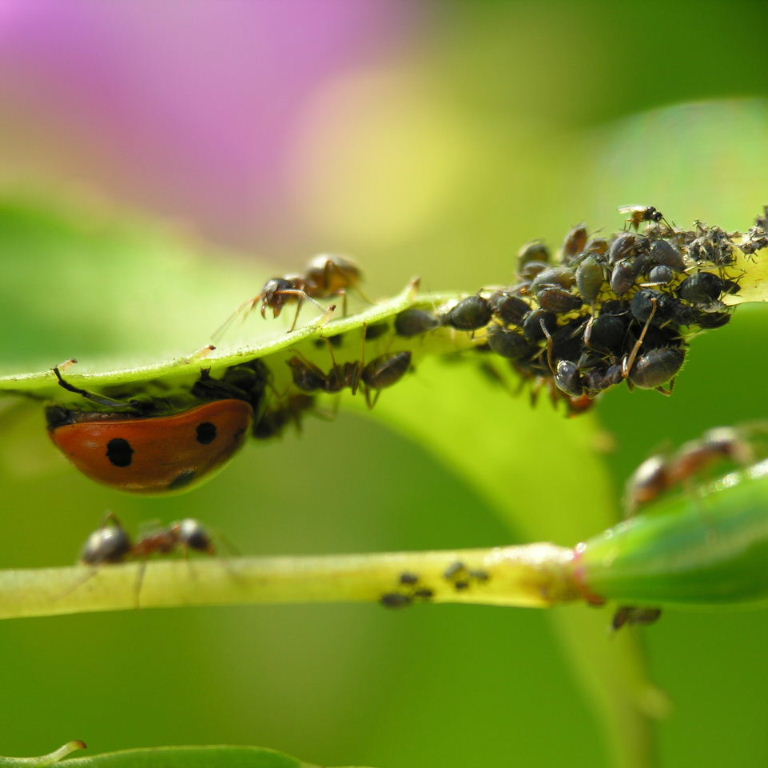
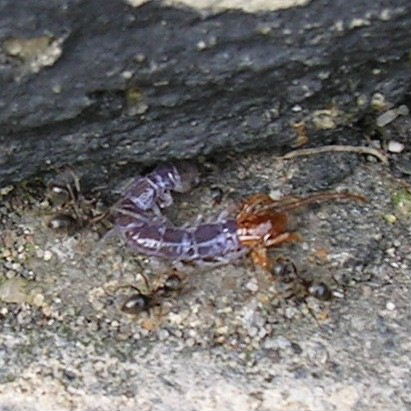
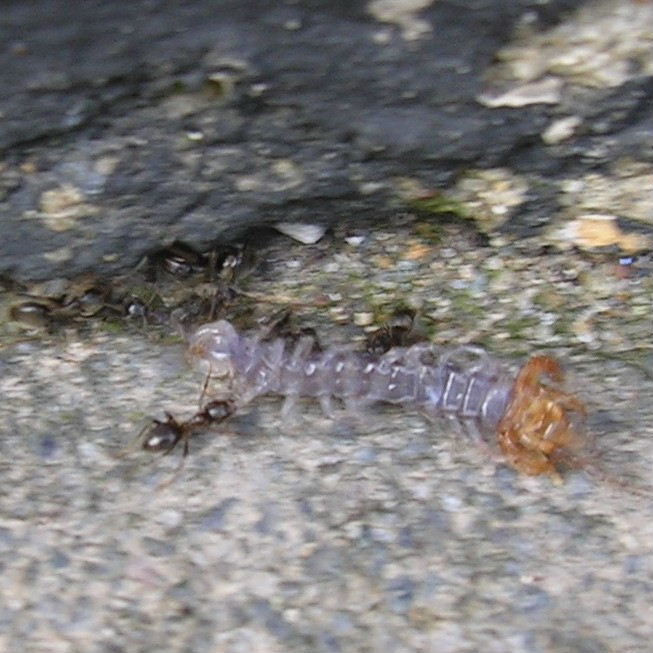
Ants are good team workers. They work together to see off threats and to carry large prey to their nest (above with dead centipede).


